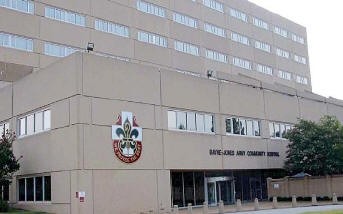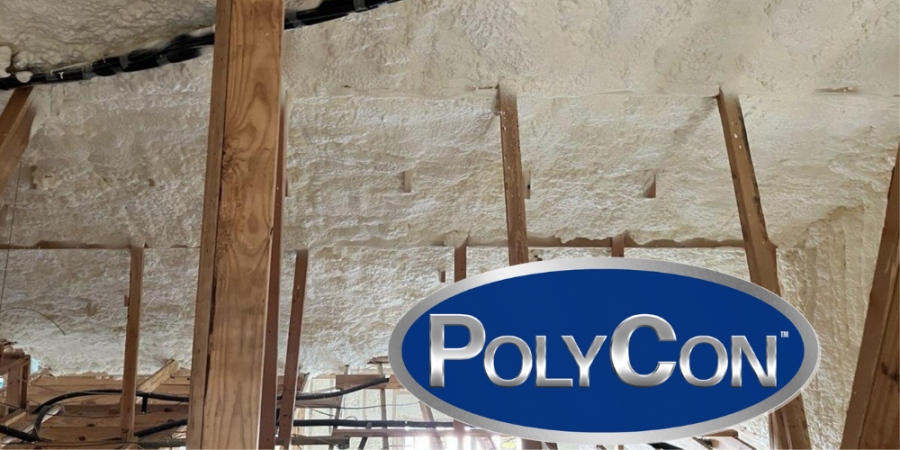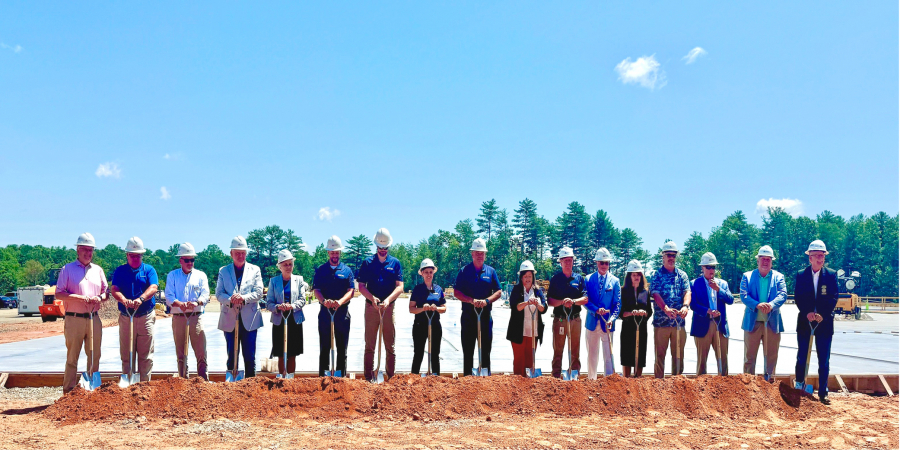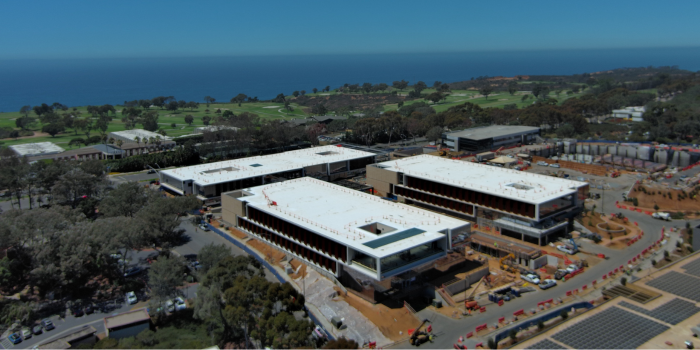Spray Foam Insulated Roof Holds Firm in Hurricane

In 1941, the United States Army built the Fort Polk base in Louisiana to train soldiers for combat in World War II. Fort Polk remains in operation today and is now known as an elite training ground called the Joint Readiness Training Center, where soldiers come to live and train in a realistic conflict environment.
Nearly 70 years old, the base is undergoing one of the biggest construction booms in its history, with over $300 million in new construction and ongoing renovation projects.
Included in the ongoing renovation and expansion is the base hospital’s roof, finished with a spray-applied polyurethane foam system in 2005. Built shortly after Fort Polk opened, the Bayne-Jones Army Community Hospital has also been in operation for several decades. In the beginning, the hospital was built to care for the soldiers stationed at the base and for the prisoners of war who were held at a nearby camp. Today, the Bayne-Jones Army Community Hospital is a full-service facility with active operating and delivery rooms, serving a population of over 130,000 Fort Polk residents and staff. “The PIPS process identified IRC and the SPF roofing system as the top-performing system for the application, based on IRC’s past proven performance,” he said. With the help of the SPF roofing system, the hospital should expect a high-performance and severe weather-resistant roof for many years to come. With proper care, SPF roofs have been known to last for 20- 30 years. At the end of their lifespan, the roof can usually be recoated to provide even more years of durability. The Bayne-Jones Army Community Hospital can continue to feel confident about providing effective health care for the Fort Polk and Joint Readiness Training Center community with a sturdy roof over its head. Click here to read more about using spray foam insulation in hurricane zones.
The Bayne-Jones Army Community Hospital re-roofing project presented some serious challenges for the renovation team. The facility is very active, so disruption to the function of the hospital had to be minimal. The 125,000 square-foot roof, made up of built-up roofing (BUR) over concrete, had many fresh air intakes that had to be protected from the fumes and odors associated with a construction project. The most challenging aspect? The existing roof had sections covered with 3’ x 12’ concrete footings that supported damaged and unusable solar collection units. It was determined that these units would have to be removed and the spaces they left filled in.


It was the relationship between the PBSRG and the U.S. Army’s Medical Command (Medcom) that established the Army’s awareness of spray-applied polyurethane foam (SPF) roofing systems.
After a site investigation of the hospital was conducted using the PBSRG tools, Medcom made their decision to go with subcontractor Insulated Roofing Contractors (IRC). As for the SPF system, Dr. Kashiwagi says the decision was made based on performance and price.
The IRC bid was not the lowest bid, stressed IRC executive Sean Stumler; the company was chosen for its customer service and warranty. However, SPF roofing provides a low lifecycle cost with little to no maintenance, combined with the ability to install directly to the existing substrate in most retrofit applications and superior insulating performance that contributes to improved building energy efficiency. For example, a study performed by Gerald Scott P.E. showed that it is possible to recoup the complete cost of the roof application through energy savings in an average of 4.5 years.
Stumler says the SPF roofing was an ideal choice for the Bayne- Jones Army Community Hospital, because of its quick and low- isruption application methods. In addition, as a spray-applied system, SPF makes it easy to cover an uneven roof surface—like that left by the removed concrete footings— smoothly and seamlessly.
“We applied an inch and a half of SPF,” explains Stumler. When asked if the building’s function as a hospital provided an extra challenge, he says, “The minimal disruption of an SPF application was key in keeping the facility functioning normally. A different system may have required the BUR and concrete roofing to be removed, which would have caused significant disruption.”
Because Fort Polk is located in Louisiana, the now-obvious question is how any building might stand up against severe weather. While Hurricane Katrina was not a factor for the Fort Polk Base due to its location being out of that storm’s path, Hurricane Rita affected the area directly. With winds reaching 108 mph, the SPF roof held firm.
“The new SPF roofing did its job just like it should,” says Stumler. “It didn’t budge an inch or leak a drop. We went down and inspected the roof after Hurricane Rita and there was no wind damage at all. It performed perfectly.”
It is not surprising that the Bayne-Jones Army Community Hospital was able to stand up against Hurricane Rita. SPF roofing systems are seamless and self-flashing, making wind uplift virtually impossible. The roof’s monolithic construction does not allow for any edges that wind would otherwise get under and lift. Wind uplift resistance is a significant feature for any roof, as roof failures are the leading cause of building loss during extreme weather events. Once a building loses one or more pieces of roof deck, the losses increase exponentially due to the vast amount of water that enters the building. With SPF roofs, pieces do not fly off because the roof is literally one piece. Furthermore, the closedcell foam does not allow water to migrate through the material, leaving the roof system leak- free after a storm.
Disqus website name not provided.









































